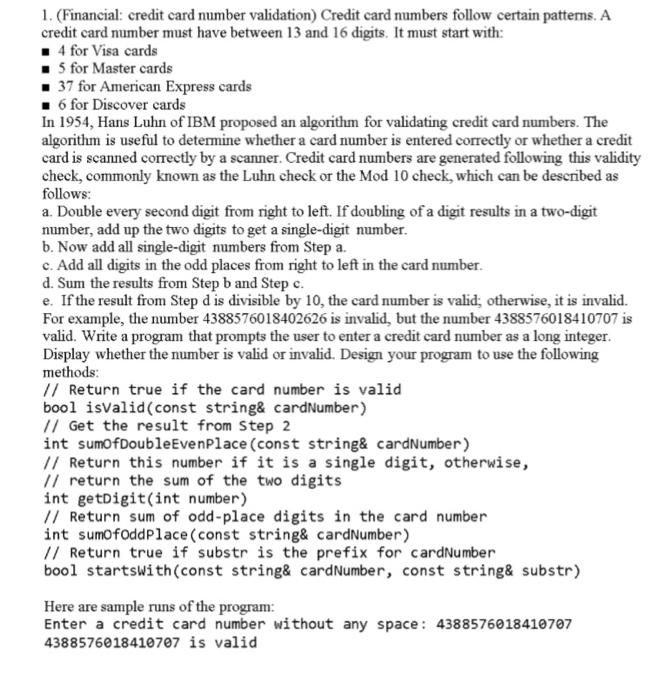Answered step by step
Verified Expert Solution
Question
1 Approved Answer
C++ please 1. (Financial: credit card number validation) Credit card numbers follow certain patterns. A credit card number must have between 13 and 16 digits.
 C++ please
C++ please Step by Step Solution
There are 3 Steps involved in it
Step: 1

Get Instant Access to Expert-Tailored Solutions
See step-by-step solutions with expert insights and AI powered tools for academic success
Step: 2

Step: 3

Ace Your Homework with AI
Get the answers you need in no time with our AI-driven, step-by-step assistance
Get Started


